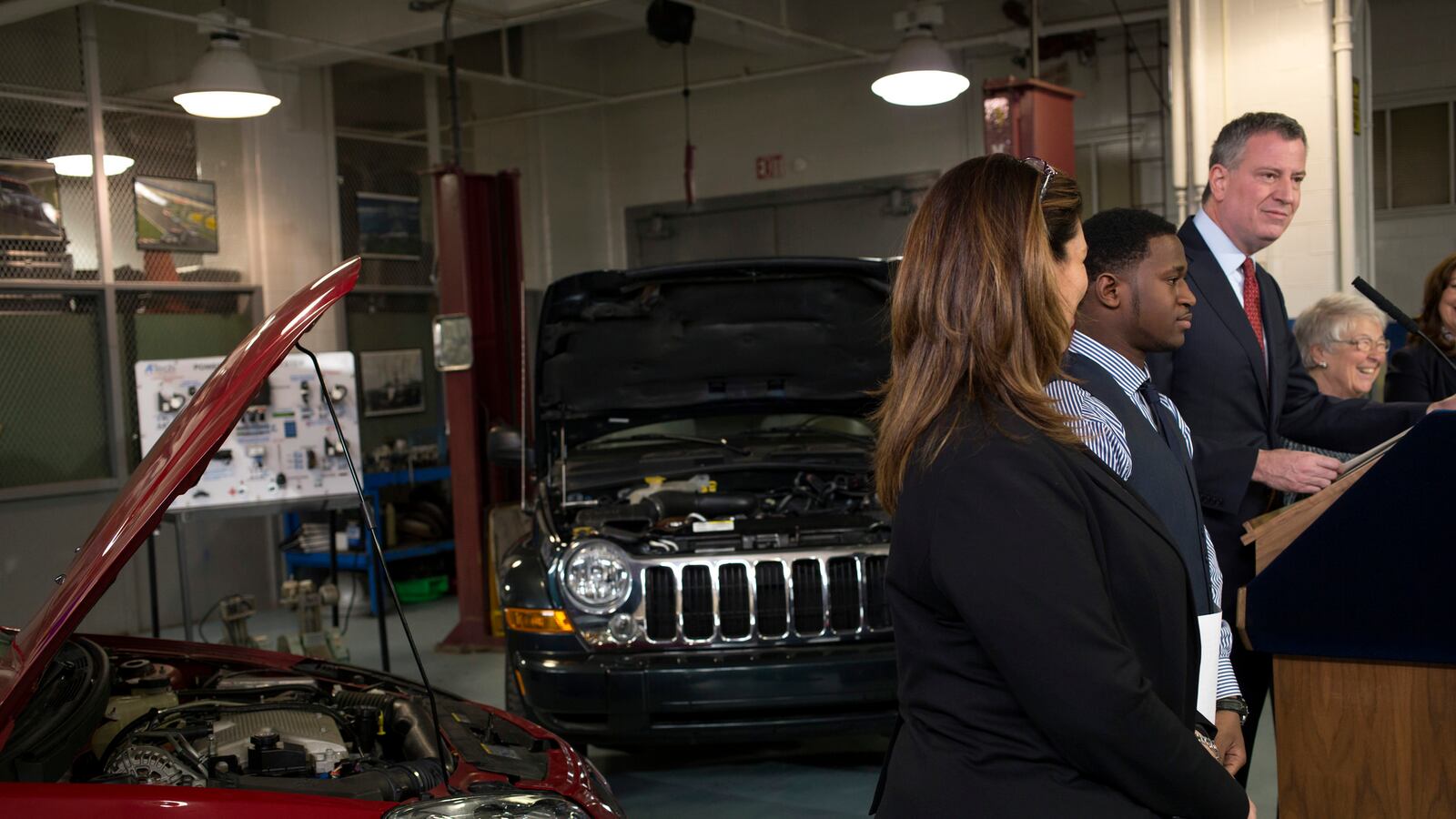The city will begin sending schools in its “Renewal” turnaround program fewer latecomer students, who often pose extra challenges for schools, Chancellor Carmen Fariña announced this week.
The move offers some relief from one enrollment quandary facing the city’s low-performing schools. Under the city’s choice-based admissions process, low-performing high schools often struggled to fill their seats, some of which the city would later fill with students who entered the system after typical admissions deadlines. Those “over-the-counter” students could potentially pull down the school’s performance even further, in what some have called an enrollment “death spiral.”
“I know that many of you have expressed concerns about the admissions process for ‘Over-the-Counter’ students,” Fariña said in a memo that Renewal schools received Wednesday. “We plan on reducing the number of OTC students who are assigned to Renewal Schools.”
But the move would also restrict the flow of students to Renewal Schools, which have just three years to make significant academic gains, and many of which have seen their enrollment fall for years. Since funding is tied to enrollment, such declines have made it difficult for the schools to offer special programs and elective classes.
Education department spokeswoman Devora Kaye said superintendents and Renewal officials will balance the needs of latecomer students with improvement efforts underway at Renewal schools. At the same time, they will try to help those schools attract more students during the normal admissions process.
“In their critical role, they will be thinking through the best way to refer OTC students to Renewal Schools or other schools in the district — based on student’s needs and while continuing to support the progress underway at each Renewal School,” Kaye said in a statement. “Also, by promoting the new services offered at Renewal Schools — like course specific offerings, community school services, extended day learning, and small group tutoring opportunities — we’ll work to attract community partners and students to these schools.”
The city is also considering redirecting latecomer students in younger grades, she said.
The policy change begins to address a question that some Renewal school staffers have been asking behind closed doors: How can the city expect them to make rapid gains if it keeps sending them students mid-year who may have recently arrived in the country or been released from jail? It comes after the city told two Renewal schools last year facing extra scrutiny from the state — Boys and Girls and Automotive high schools in Brooklyn — that it would temporarily stop sending them latecomers.
Almost all the Renewal schools confront the interlocked challenges of declining enrollments and especially challenging student populations. Over the past two school years, 80 of the 94 Renewal schools have seen their enrollment dip, and 14 have seen more than one-third of their total enrollment disappear since 2013, according to a recent analysis by the city’s Independent Budget Office. The schools are serve an outsize share of English language learners, black students, Hispanic students, and students in temporary housing — all of whom typically post lower-than-average test scores and graduation rates.
Boys and Girls High School illustrates how those challenges can intersect. Its enrollment has plummeted from 2,300 to 500 students in just a few years, leaving it with many needy students but less funding. The over-the-counter freeze was meant to spare the school from receiving many more students with exceptional needs. But even though the relatively small number of latecomer students could hardly plug the school’s growing enrollment gap, some staffers see the policy as one more obstacle to repopulating the school.
“That moratorium,” a Boys and Girls staffer said last month, “chokes us to death.”
The city has more than 400 high schools, 35 of which are in the Renewal program. Since the city’s high-performing schools have many more applicants than seats, it’s likely that over-the-counter students will end up at other schools that are struggling to meet their enrollment targets, but not receiving the benefits of the Renewal program. There are a lot of such students: A 2013 report from the Annenberg Institute for School Reform estimated that 36,000 students enter New York City high schools outside of the typical admissions process.
Between 2008 and 2011, data showed that those students were disproportionately assigned to struggling high schools that the Bloomberg administration had decided to close or would soon begin that process. Some of the schools with the highest share of over-the-counter students in 2011 are now in the city’s Renewal program: Forty-five percent of students at Holcombe L. Rucker School of Community Research were latecomers, as were 36 percent of students at DreamYard Preparatory School and 33 percent of students at Brooklyn Generation School.

